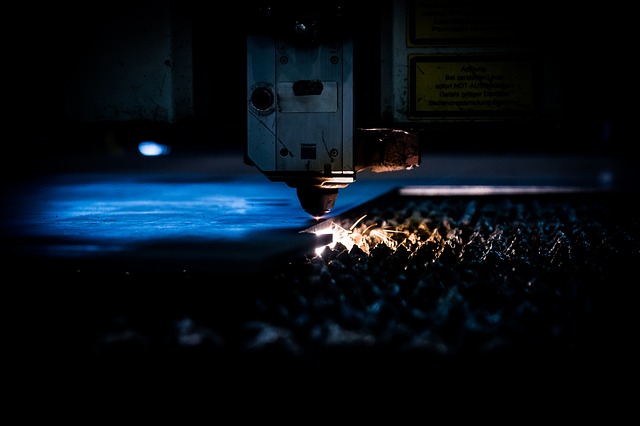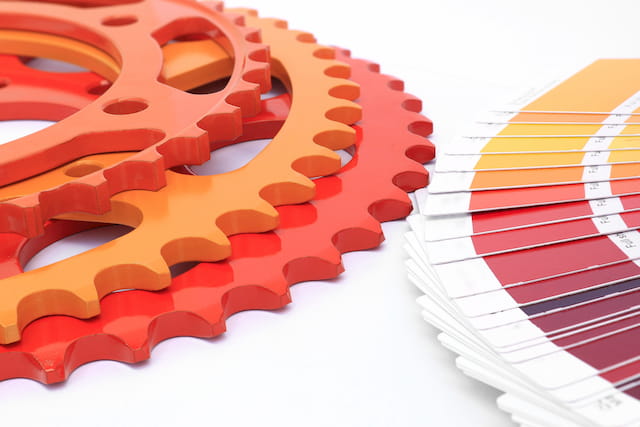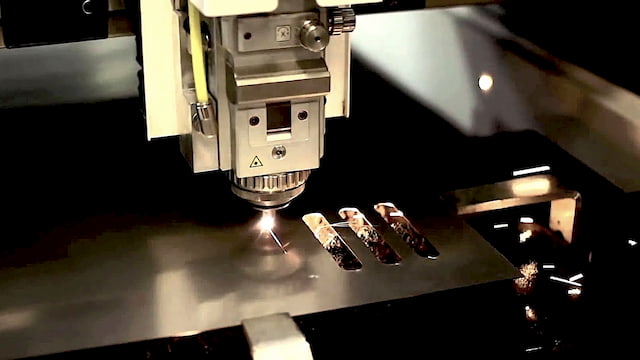Updated 16 August 2023
Sheet metal fabrication is the process of forming metal sheets to the desired shape using different manufacturing methods. The completion of a product usually comprises of many steps – from cutting and bending to surface treatment and assembling.
Often times a variety of fabrication techniques can be used to achieve a similar end result. But the right choice still exists, depending on the costs and needs.
Types of Metal Fabrication Processes
The journey from sheet metal to metal products starts with CAD engineering. After making the models, each part goes through the necessary sheet metal fabrication processes. The most common ones are:
Thermal Cutting

Laser cutting is the preferred option for cutting sheets. A very quick and precise cutting method that guarantees good results.
With thicker materials, plasma cutting may be used because of its quickness. This advantage is only evident with thicknesses upward of 10 mm though.
At the same time, cutting quality favours laser cutting. So we would advise you to rather go with laser cutting services.
Mechanical Cutting
Shearing, or die cutting, refers to a process that cuts sheet metal without burning or melting it. Also, it does not produce any chips. In essence, shearing is not too different from cutting with scissors.
In shearing, a punch presses the workpiece against a fixed die or blade. The clearance between is such that the workpiece does not fit through, causing it to shear.
It is a great and cost-effective method to cut sheets into size whenever complex cuts are not necessary.
Punching
Punching is another way of cutting holes into a sheet. A metal punch hits the sheet, perforating it. It is suitable for large-scale production but not cost-effective for smaller jobs. The reason lies in the need for a separate tool for different cuts.
Bending
When it comes to actual engineering, there aren’t many metal components that elude the bending section of a fabrication shop. Press brakes are responsible for the folding of sheet metal parts.
This is probably the most difficult step in metal manufacturing because of the complexity of some bends. An engineer must be well acquainted with the limitations of metal bending to things that are actually producible.
- Personal account manager
- Quality assurance
- Payment terms for companies
- On-time delivery by Fractory
Assembling
Assembling is the ultimate or penultimate step when you want to fabricate a product. If assembling includes welding, the parts have to be clean – powder coating follows it.
Otherwise, parts are already powder-coated and adjoined using other methods, like riveting and bolting.
Powder Coating

Powder coating is a process where an electrostatic powder is applied to a charged metal component. It is the preferred surface treatment method when no special requirements, like wear-heavy or acidic environments, apply to the construction.
Advantages of Sheet Metal
Sheet metal design options are very flexible. Clients can express a need for certain functionality and sheet metal materials leave room for many different solutions.
Single prototypes to volume production are possible. Contemporary production methods, like 3D printing, provide quick lead times that are well-aligned with the needs of prototyping. These methods are, however, limited to prototyping only.
Sheet metal fabrication processes are suitable for a gradual transition from prototyping to large-scale production. Making prototypes sets the baseline and expectations for larger quantities by establishing the required infrastructure.
A wide range of surface finishes. Those include powder coating, painting, galvanising, plating, etc. This allows many different looks but also provides protection in different circumstances.
A variety of materials. The term sheet metal only tells us the range of thickness. But nothing about the material itself. Sheet metal can be of all types of metals – mild steel, stainless steel, aluminium, brass, etc.
Sheet Metal Applications
Looking around, it is clear that sheet metal has a plethora of applications. There aren’t many home appliances, constructions, etc. that don’t incorporate any sheet metal parts. Still, different sheet metal groups have some specific uses. And we can go over them.

Cold-rolled steel is comparatively cheap. As the name suggests, it is rolled at room temperature. Cold rolled steel is only limited to 3 mm thickness but has a nicer surface.
So it works well in applications that require nice smooth finishes. Some examples include home appliances, furniture, lockers and cabinets. Cold-rolled steel is also used in larger structures, e.g. steel sheds and garages.
Hot-rolled steel is formed in a heated state. Comparing hot-rolled and cold-rolled steel, hot rolling allows for easier forming, making the cost even lower. Also, thicker sheets at plates are only available as hot rolled for the same reason – ease of forming.
Hot-rolled steel, however, does not have such accurate dimensions. After rolling, the metal cools down and shrinks. This results in concentrations of stresses that can warp the material and changes in measurements.
Stainless steel sheets are good in corrosive environments, where a combination with strength is important. Mostly used for all kinds of surgical instruments, cutlery, kitchen accessories, sinks, etc. Still, there are great industrial use cases for storage tanks, valves, piping and the like.
Aluminium sheets may not be so common for every engineer because of their heavier price tag. Still, aluminium finds a lot of use throughout the industry because of its standout qualities.
It is corrosion-resistant (still, aluminium corrosion does occur) but most importantly, strong and lightweight. This makes it especially central for the transportation industry where each extra kg results in long-term losses. Consumer goods like phones, laptops, etc. often have durable and light casings made of aluminium.



